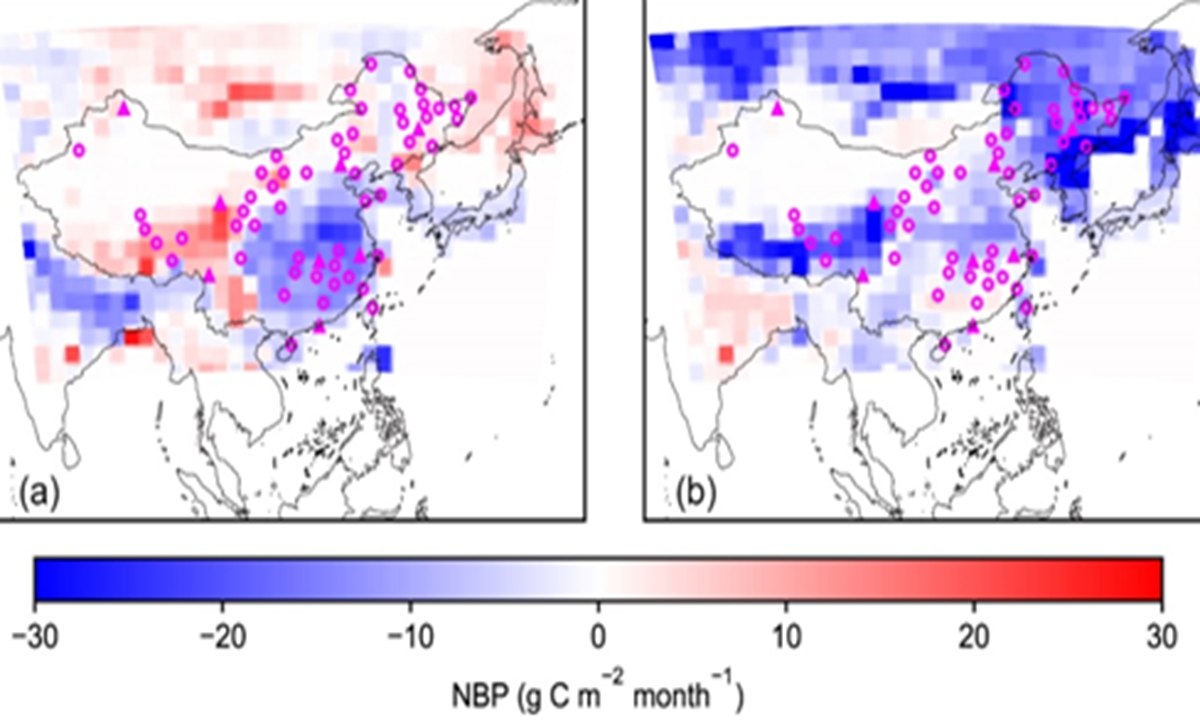Chinese scientists propose ground station layout plan for atmospheric CO2 concentration observation, essential for achieving China’s net-zero ambitions before 2060
Chinese scientists propose ground station layout plan for ... Global Times


Chinese Scientists Propose Ground Station Layout Plan for Observing Atmospheric CO2 Concentration

Photo: Courtesy of Chinese Academy of Sciences
Introduction
Chinese scientists from the Institute of Tibetan Plateau Research, Chinese Academy of Sciences (CAS), have proposed a ground station layout plan for observing atmospheric CO2 concentration. This plan is expected to play a key supporting role in formulating emission reduction and carbon sequestration policies and measures, as well as achieving carbon neutrality goals in China.
Research Proposal
The proposal, issued by associate researcher Wang Yilong and researcher Tian Xiangjun from the Institute of Tibetan Plateau Research, CAS, along with several collaborators, optimizes the selection of atmospheric carbon dioxide (CO2) observation sites. The proposal has been available online in the Science Bulletin since July 11.
Sustainable Development Goals (SDGs)
An accurate estimate of the size of the land carbon sink is essential for guiding climate mitigation actions to fulfill China’s net-zero ambitions before 2060. The proposed ground station layout plan aligns with SDG 13 (Climate Action) and SDG 15 (Life on Land).
Importance of Atmospheric Inversion
The atmospheric inversion is an effective approach to provide a spatially explicit estimate of surface CO2 fluxes that are optimally consistent with atmospheric CO2 measurements. However, the atmospheric inversion of China’s land carbon sink brings enormous uncertainties, mainly due to the poor coverage of CO2 observation stations.
Establishment of CO2 Observation Sites
The study suggests that it is necessary to establish 60 atmospheric CO2 observation sites in China. By assimilating the observation data, the accuracy of estimating the terrestrial carbon sink in China using atmospheric inversion methods will reach the advanced level of Europe and the US.
Role of Terrestrial Ecosystem Carbon Sink
The terrestrial ecosystem carbon sink is crucial for China to achieve carbon neutrality. Clarifying the size and spatial-temporal distribution of the terrestrial ecosystem carbon sink in China is essential for understanding the current status of carbon sinks and estimating their future potential. This aligns with SDG 13 (Climate Action) and SDG 15 (Life on Land).
Optimization Approach
This study adopts an optimization approach to traverse all model grids and find the optimal locations for additional sites based on the existing sites. Through iterative processes, a total of 52 additional sites were selected, along with the existing 8 sites, to form a ground station observation network for atmospheric CO2 concentration in China.
Reduction of Uncertainty
The research results show that by establishing 30 observation sites in China, the uncertainty of carbon sink estimation can be reduced from 1 billion tons of carbon per year to 300 million tons of carbon per year. If 60 observation sites are established, the uncertainty can be further reduced to 200 million tons of carbon per year.
Complement to Satellite Observation
The proposed site locations in this study include areas with low satellite coverage and complex terrain, forming an effective complement to satellite observation data. These sites will become an important part of the sky-ground integrated carbon observation system, serving the inversion and accurate accounting of CO2 balance in China.
Funding and Support
This research was supported by the Second Comprehensive Scientific Expedition to the Qinghai-Tibet Plateau, the National Natural Science Foundation of China, the National Major Science and Technology Infrastructure Project (EarthLab), and the Youth Innovation Major Project of the National Key Laboratory of the Tibetan Plateau Earth System and Resource Environment.
Source: Global Times
SDGs, Targets, and Indicators Analysis
1. Which SDGs are addressed or connected to the issues highlighted in the article?
- SDG 13: Climate Action
- SDG 15: Life on Land
The article discusses the importance of accurately estimating the size of the land carbon sink in China to guide climate mitigation actions and achieve carbon neutrality goals. This aligns with SDG 13, which focuses on taking urgent action to combat climate change and its impacts. Additionally, understanding the current status and future potential of carbon sinks in China is crucial for SDG 15, which aims to protect, restore, and promote sustainable use of terrestrial ecosystems.
2. What specific targets under those SDGs can be identified based on the article’s content?
- SDG 13.2: Integrate climate change measures into national policies, strategies, and planning
- SDG 15.1: Ensure conservation, restoration, and sustainable use of terrestrial and inland freshwater ecosystems
The article emphasizes the need to establish atmospheric CO2 observation sites in China to improve the accuracy of estimating the terrestrial carbon sink. By doing so, it will support the formulation of emission reduction and carbon sequestration policies and measures, aligning with SDG 13.2. Additionally, the establishment of these observation sites will contribute to a better understanding of China’s carbon sink and help ensure its conservation and sustainable use, in line with SDG 15.1.
3. Are there any indicators mentioned or implied in the article that can be used to measure progress towards the identified targets?
- Number of atmospheric CO2 observation sites established in China
- Reduction in uncertainty of carbon sink estimation
- Improvement in the accuracy of estimating China’s terrestrial carbon sink
The article mentions the need to establish 60 atmospheric CO2 observation sites in China to improve the accuracy of estimating the terrestrial carbon sink. The number of observation sites established can serve as an indicator of progress towards the targets. Additionally, the article states that the uncertainty of carbon sink estimation can be reduced from 1 billion tons of carbon per year to 300 million tons of carbon per year with 30 observation sites, and further reduced to 200 million tons of carbon per year with 60 observation sites. This reduction in uncertainty can be used as an indicator of progress. Lastly, the improvement in the accuracy of estimating China’s terrestrial carbon sink can be measured through scientific assessments and comparisons with advanced methods used in Europe and the US.
4. Table: SDGs, Targets, and Indicators
| SDGs | Targets | Indicators |
|---|---|---|
| SDG 13: Climate Action | SDG 13.2: Integrate climate change measures into national policies, strategies, and planning | – Number of atmospheric CO2 observation sites established in China – Reduction in uncertainty of carbon sink estimation – Improvement in the accuracy of estimating China’s terrestrial carbon sink |
| SDG 15: Life on Land | SDG 15.1: Ensure conservation, restoration, and sustainable use of terrestrial and inland freshwater ecosystems | – Number of atmospheric CO2 observation sites established in China – Reduction in uncertainty of carbon sink estimation – Improvement in the accuracy of estimating China’s terrestrial carbon sink |
Behold! This splendid article springs forth from the wellspring of knowledge, shaped by a wondrous proprietary AI technology that delved into a vast ocean of data, illuminating the path towards the Sustainable Development Goals. Remember that all rights are reserved by SDG Investors LLC, empowering us to champion progress together.
Source: globaltimes.cn

Join us, as fellow seekers of change, on a transformative journey at https://sdgtalks.ai/welcome, where you can become a member and actively contribute to shaping a brighter future.







